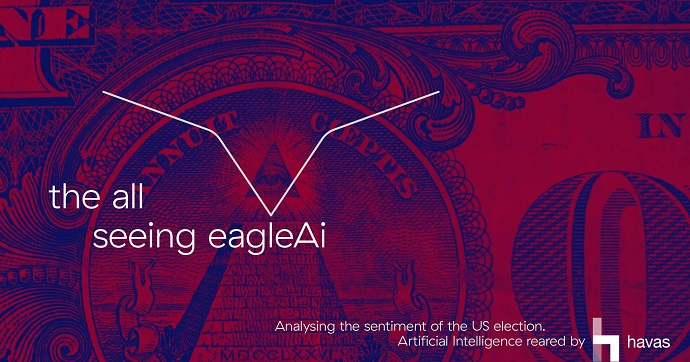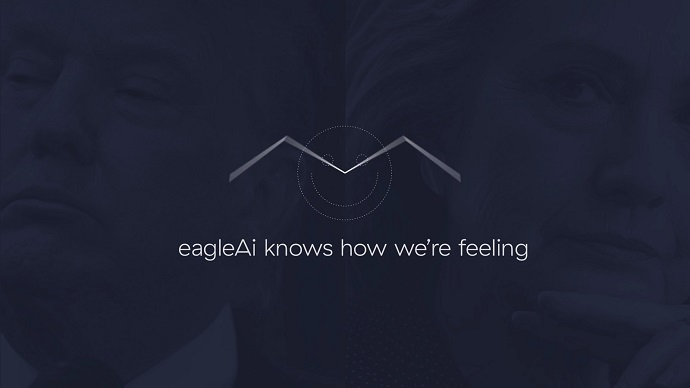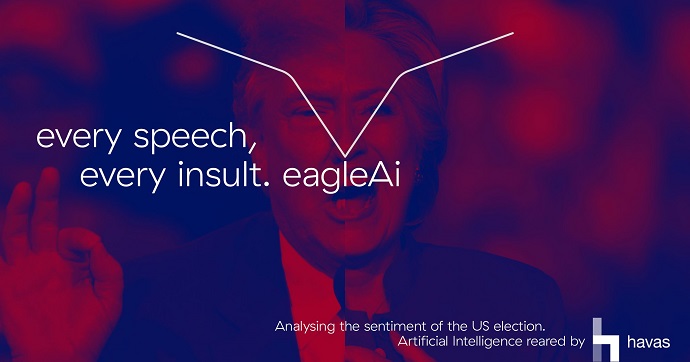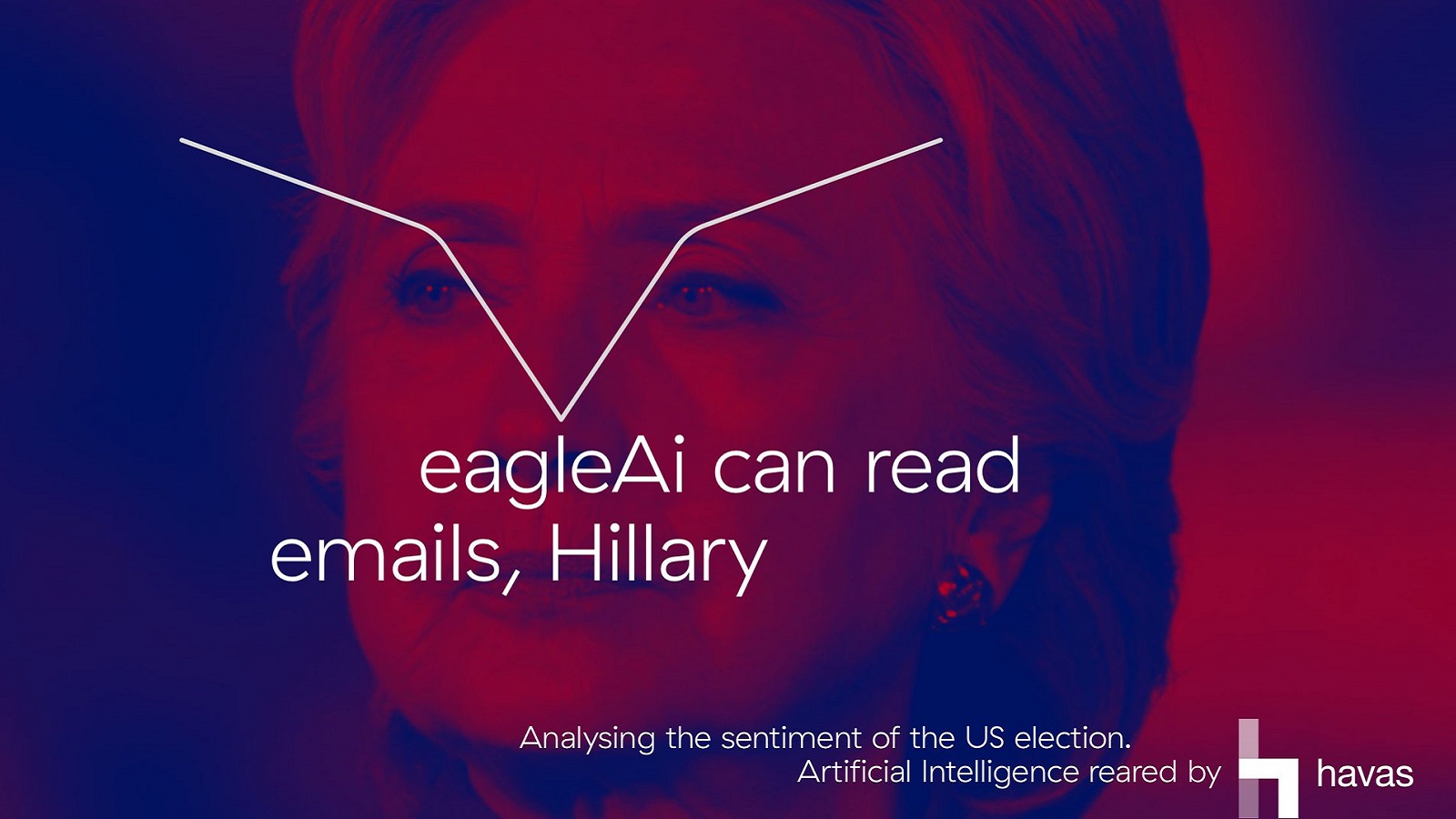As 100 million of Americans are going to the polls today to decide who their 45th president will be, some brands focus on each of the presidential candidates’ flaws – such as Corona’s ‘The Wall’ campaign we posted about earlier today. Havas, a French multinational advertising and public relations company, have created a custom intelligence platform which will help measure the mood of American voters before the actual results of the highly anticipated election come in. EagleAI, as is the AI system cleverly called, will be pioneered at UK’s commercial TV network, ITV, today.
The data-mining tool EagleAI is labeled to be the first AI system to be created for TV news and will scrutinize through mayhem of unorganized data that will be generated not only by people reacting to NASA’s astronauts casting their vote in the US #Election2016 from space, but by all data generated by the, sometimes ugly, campaign. As a result, it will provide us with insights that normal human observers may have missed.
Although the tool cannot be Havas-branded due to Ofcom guidelines and The Broadcasting Code which prevents “undue prominence of a product or a brand in news programming”, it will go through millions of social media posts, from comments, tweets, to photos, videos, search and press coverage (generated since both candidates were named by their parties in the race to the White House) and hopefully come up with insights into US voters’ mindsets by identifying language, sentiment, imagery, personality, tone and confidence in all the materials mentioning the election pair.
This approach might seem similar to our readers who are familiar with the first-ever “cognitive” film trailer of all time for the sci-fi horror film. The machine behind all this is IBM’s Watson, as Havas has a licensing arrangement to use its technology. Executive Digital Director at Havas, Lisa De Bonis said: “EagleAi works a lot like a human brain actually, but on a scale that our brains are not currently able to do. It can spot connections and patterns just like us, just on a truly massive scale.”
Credits:
